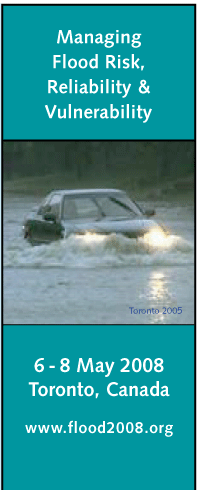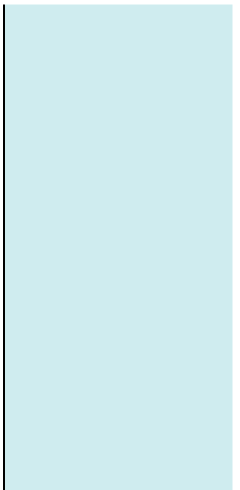
 |
|
 |
Instructions for Symposium Papers PreparationAbstractThis set of instructions outlines the required format of full papers for the Symposium. The completed paper shall not exceed 8 pages. Author(s) are required to submit the full version of their paper, as a Microsoft Word document to Mrs. Tracy Waddington. A sample paper is also available on our website. Note that the abstract must not exceed 300 words in length, and that key words (no more than five sets) follow immediately after it. Templates and examples are available:
IntroductionThe Symposium Proceedings will be prepared from an electronic file document (.doc format) supplied by the author(s). To ensure publication quality and uniformity, the following requirements have been prepared to assist authors in preparing papers for the Symposium. If these requirements are not followed, papers will be returned for revision and re-submittal. The resulting time delay could cause rejection of the paper because of publication deadlines for the Symposium Proceedings. Submittal and Review ProcessAuthor(s) are required to submit one electronic version of the paper in MS Word, which is formatted according to these instructions. Electronic file documents should be submitted directly to Mrs. Tracy Waddington (twaddington@pacicc.ca). The paper should be accompanied with the signed copy of the “Copyright Transfer Statement”. ScheduleThe full paper must be submitted electronically by March 31, 2008. Late submission could result in the paper being omitted from the conference proceedings. General RequirementsLengthPapers shall not exceed EIGHT (8) pages in length. CommercialismAll commercialism must be avoided. This applies to all authors, including those from universities, consultants, independent laboratories and manufacturers. Products should be defined by their properties. Organization names can only be used once within the paper. Product names can only be used once within the paper and only where they are associated with the definition of the properties. Papers that do not conform will be returned to the author for revision. Failure to conform to these presentation rules will result in rejection of the paper. Acknowledgement of sponsorship at the end of a paper is both appropriate and acceptable. ClearancesThe author(s) are responsible for obtaining written permission to profile the project or subject matter in their paper from any and all clients, owners or others who contracted for the work. Conference organizers assume the author(s) has/have obtained the proper permission. Conference organizers assume no liability for the author(s) failure to gain proper permission. Copyright MaterialIf a figure, table or photograph has been published previously, it will be necessary for the author to obtain written approval from the original publisher for it to be reprinted in the Proceedings. The source of previously published material should be included in the caption for the table, figure or photograph. Assignment of CopyrightThe corresponding author must sign the "Copyright Transfer Statement" for the paper to be included in the Symposium proceedings. This form is attached to this message. Word ProcessingFormatThe author(s) are required to submit an electronic copy of the full paper in Word format. This .doc file must be created from the “Flood2008 Template.doc” template file attached to this message. Authors are asked to ensure that the appropriate styles of text have been used throughout their final paper. Title/AuthorThe full paper title should typed in the appropriate “Title” section of the template. The complete list of authors, along with their affiliation and country should be typed in the “Author” section of the template. AbstractEach paper should begin with an abstract of no more than 300 words. The Abstract should be entered in the “Abstract” section of the template file. Both the “Abstract” and the “Paper” are to be supplied in one file. Numbered HeadingsWithin the paper, number all headings as follows – use the styles in the supplied template: Equations, Formulas, Symbols and UnitsType all equations and formulas from the left margin (do not centre in the page) and number them consecutively. Use the ‘paragraph style’ (ie. Arial 10pt, single-spaced) for equations. Equation numbers should be placed flush at the left margin in square brackets. Refer to equations in the body of text by these numbers (e.g. “Equation 1 shows…”). Use SI units and Arabic numerals, but do not use italics. When presenting compound units, place spaces between their constituent parts and indicate division by negative exponents, such as m2 s-1, or W m-2. An example equation is shown below: IllustrationsNumber illustrations (whether drawings or photographs) consecutively in the order of appearance and refer to them as Figure 1, Figure 2 to 4, and so on. Illustrations should be placed as close as possible to where they are first referenced in the text. Avoid placing illustrations sideways on a page; however if illustrations must be sideways, no other text should appear on that page. Photographs should be of good quality contrast. Use the style ‘Figure Caption’ available within the template file for your figure captions. Please ensure that illustrations borrowed or adapted from another source are properly acknowledged. TablesNumber tables consecutively in order of appearance and place them as close as possible to where they are first referenced in the text. Refer to tables as Table 1, or Tables 1 and 2, in the body of the text. AcknowledgementsAcknowledge sponsor(s), design engineer, project engineer, contractors, and/or owners that were involved. The acknowledgements should be the last section prior to the References section. ReferencesWithin the body of the text, references should be made in parenthesis with the authors’ surnames and the year of publication such as (Clark et al., 1977). At the end of the paper, list all references in alphabetical order of the first author’s surname. The first line of each entry in the reference list should not be indented; the following lines should have a two-space (10 point) indention. Do not leave an open line between references. Type the book titles and names of journals, reports and conferences in italics. Format for BooksLast name, Initials. Year. Book Title, Publisher, City, State/Province, Country (of publisher). Format for Journal PapersLast name, Initials. Year. Article Title. Name of Journal, volume number in Arabic numerals, pages. Format for Conference PapersLast name, Initials. Year. Article Title. Name of conference, Publisher, City, State/Province and Country where conference took place, volume number in Arabic numerals: pages. Templates and Examples
|
 |
|||
 |
 |
 |